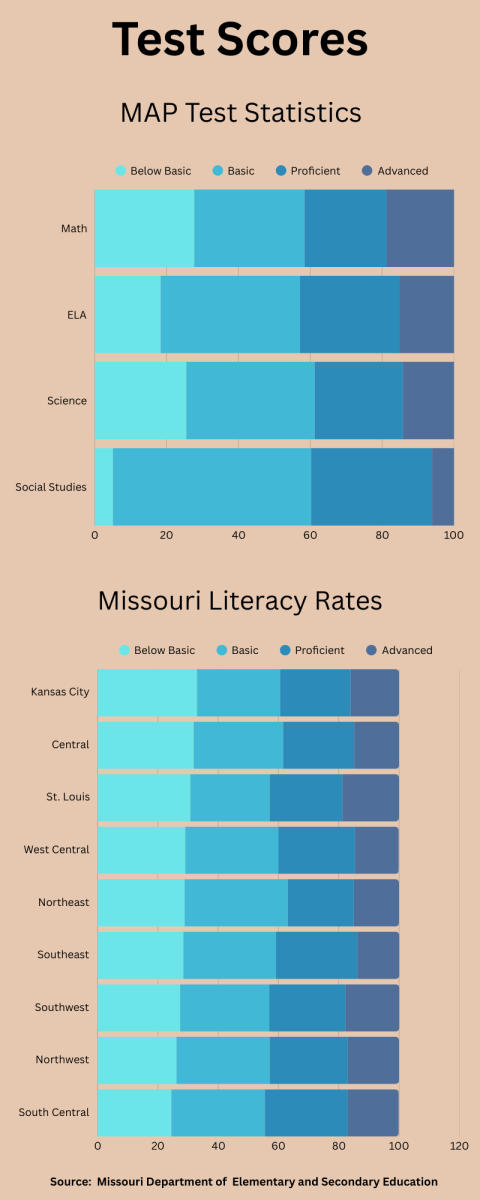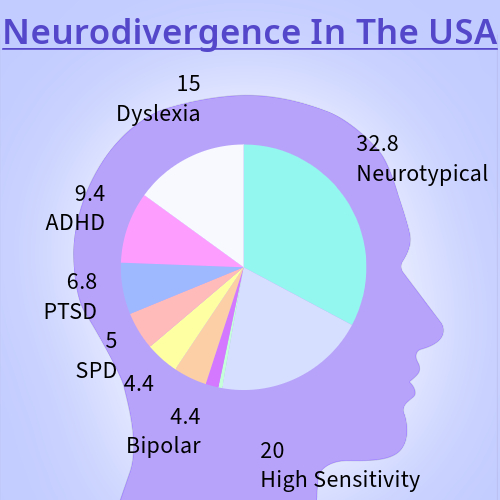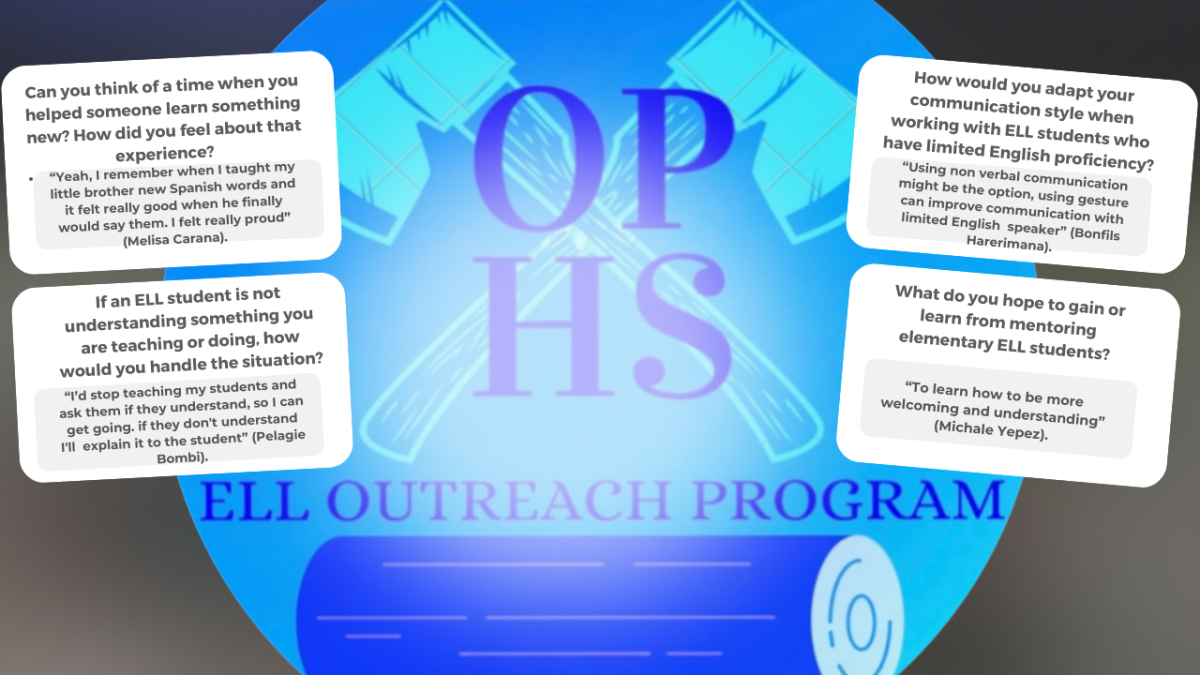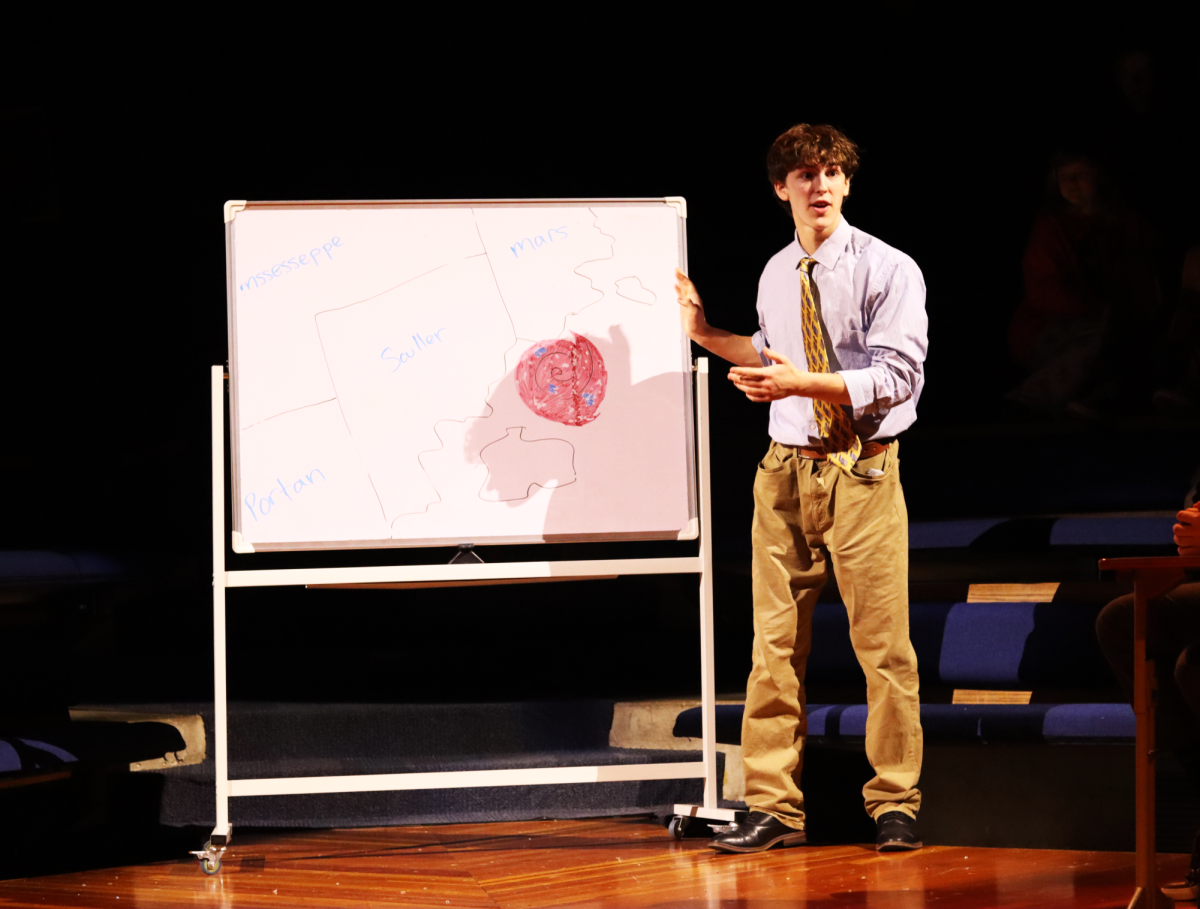You can hear the clinking of dishes and the sizzle of the food cooking on the stove. You can smell the seasonings and spices added to a hot pan. This is a high school classroom.
Oak Park High School has a variety of cooking classes available for students, but what happens in those classes?
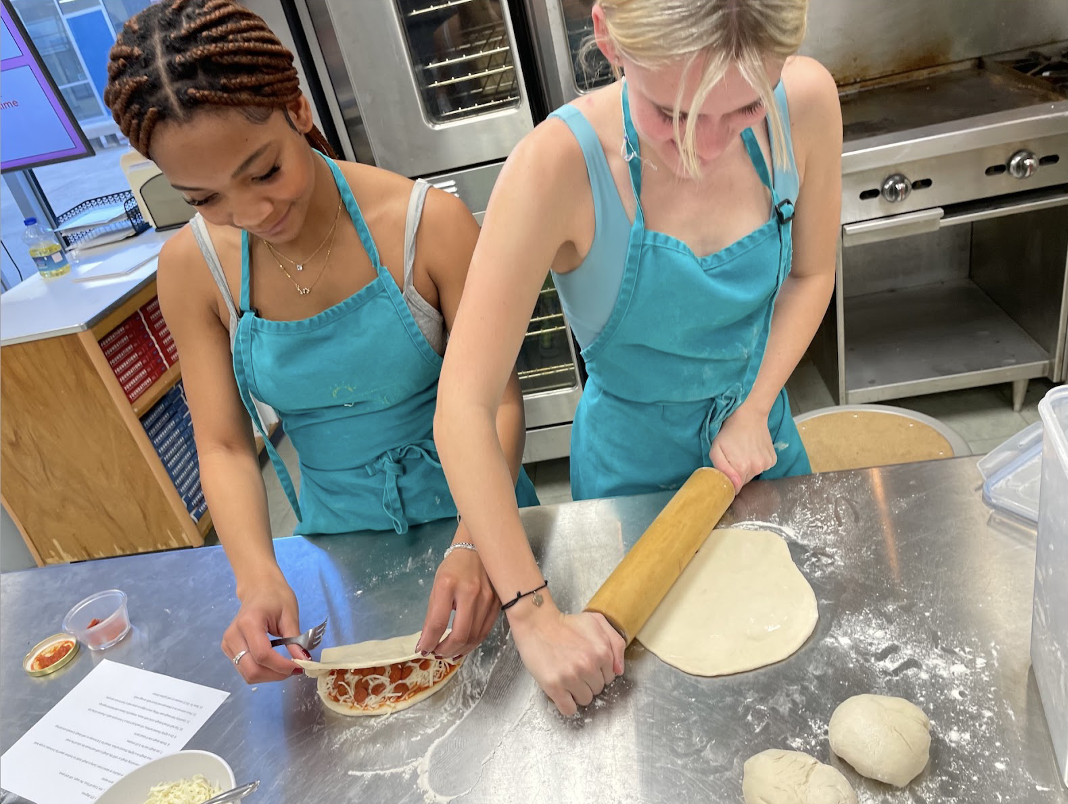
Family and consumer sciences teacher Sarah Lorenson teaches five cooking classes.
Lorenson herself never took any cooking classes when she was in high school; she took other FACS classes.
When she came to work at OP, she ended up teaching many cooking classes. Lorenson said even though she didn’t set out to be a cooking teacher, she enjoys it because it is hands-on and most of the kids in her classes genuinely want to be there.
There are many struggles with cooking in school, both for the teachers and the students. There are misbehaving students who make a kitchen environment unsafe, time restrictions limiting what students can cook in a class period, limited funding to buy ingredients for all the classes, etc.
Kassie Reynolds, FACS teacher who teaches four sections of foods for life, said, “There is a lot of extra prep work when it comes to teaching foods classes. This includes grocery shopping, taking inventory, and extra cleaning.”
“Foods for life is the most difficult to teach,” Lorenson said. She said it is difficult teaching students who all have different skill levels at the same time. Reynolds said it can also be difficult when a group of students don’t work well together.
Cooking classes aren’t just cooking, and the cooking isn’t always the most difficult part.
Senior Elleanna Miera said the hardest part for her was the note taking. She also said taking notes for her cooking classes helped her gain better note taking skills. Another problem Miera experienced is the limited time to cook, clean, and eat on lab days.
“We don’t get long enough class time for everything.”
Despite all the problems of cooking classes in high schools, there are many positive things about them.
Cooking classes teach a valuable skill important to have in everyday life; they can promote healthy eating and introduce possible career options. Cooking is an essential skill to have in life and is one of the reasons Lorenson and Miera said they enjoy the class.
Reynolds said the best part of teaching students to cook is seeing them become more confident in the kitchen and trying recipes at home.
Similarly, Lorenson said, “I like seeing students gain some maturity in class that they didn’t have before.”
Another positive thing about cooking class is…the food! After working hard to cook the dish for the lab, students sit down and eat their creations. This gives students an extra snack during the day and is nice for students who skip breakfast and have the class in the morning, or even the students who weren’t full after lunch. Sometimes, when there is extra or the lab asks for it, the teacher even gets to eat some of the food made.







